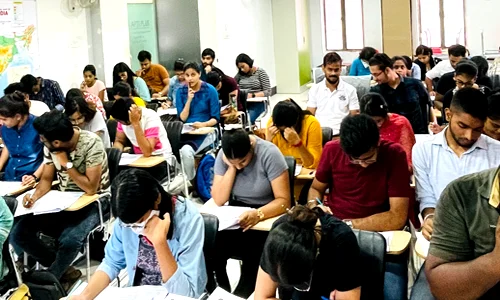



Indian scientists have created an indigenous, IP-free gene-editing tool using TnpB proteins, offering a cheaper alternative to CRISPR-Cas9. It enables precise edits without foreign genes, supporting resilient, nutrient-rich crops. Despite eased rules for SDN-1/2 crops, regulatory gaps, ethics, and public distrust after the GM Mustard debate remain major hurdles.
Click to View MoreThe Draft Seeds Bill, 2025 replaces the 1966 Act, makes seed registration mandatory, adds a traceability portal, and sets penalties up to ₹30 lakh while easing minor offences. Farmer groups oppose it, citing a pro-corporate tilt, weak compensation provisions, and excessive central control that affects farmer rights.
Click to View MoreStubble burning in India has multidimensional consequences. Environmentally, it releases particulate matter and greenhouse gases, reduces soil fertility, and harms biodiversity. Health-wise, it causes respiratory and cardiovascular diseases, eye irritation, and skin problems. Economically, while it saves farmers time and labor in the short term, it degrades soil, reduces crop yields, raises healthcare costs, and affects transport and tourism. Socially, it can trigger public health crises, farmer migration, and conflicts over legal penalties. Effective policy measures—including satellite monitoring, incentives for eco-friendly machinery, and balancing farmer livelihoods with environmental protection—are crucial to mitigate these impacts.
Click to View MoreNITI Aayog launched the “Reimagining Agriculture” Roadmap to drive transformational growth through AI, Digital Twins, and climate-resilient seeds. Anchored in the Digital Agriculture Mission 2.0, it aims to triple agriculture’s size, cut post-harvest losses below 5%, and empower every farmer as a co-creator.
Click to View More‘Sweet Revolution ', driven by the National Beekeeping & Honey Mission (NBHM), enhances farmer income and pollination. With 1.4 LMT honey production and 1.07 LMT exports (2023–24), India ranks second globally. NBHM boosts quality, traceability, and FPO support through labs and the Madhukranti portal.
Click to View MoreBuilding climate-resilient agriculture secures food supply and supports farmers. India must shift from input-heavy farming to sustainable methods like crop diversification, agroecology, and smart water use. Strengthening soil health, using technology, and valuing traditional knowledge will ensure lasting environmental and economic stability.
Click to View MoreDongar cultivation is a traditional upland farming system practiced by the Kondh tribes of Odisha, where millets, pulses, and oilseeds are grown together on hill slopes. This eco-friendly method supports food security and biodiversity but is now threatened by the spread of eucalyptus monoculture. Government initiatives like the Odisha Millets Mission and NGO efforts aim to revive and protect this sustainable farming tradition for future generations.
Click to View MoreThe National Pulses Mission (2025–31) drives India toward self-reliance in pulses, boosts food security, and improves farmer welfare. It addresses yield gaps, infrastructure needs, and climate challenges, reducing import dependence. Success requires strong implementation, farmer participation, and sustainable practices, supporting Aatmanirbhar Bharat and national nutritional security.
Click to View MoreIndia showcases its food processing strength at World Food India 2025, leveraging agriculture to add value, create rural jobs, and attract global investment. Adopting technology, driving innovation, and reducing waste will overcome supply chain challenges and achieve global leadership.
Click to View MoreDespite progress in reducing extreme poverty, India faces a nutritional security challenge. The PDS must evolve from calorie provision to balanced diets, addressing hidden hunger, improving public health, and ensuring every citizen enjoys not just food, but the dignity of nutrition.
Click to View MoreThe WTO Agreement on Fisheries Subsidies is a landmark step in ocean governance, curbing harmful subsidies fueling overfishing and illegal practices, while safeguarding marine biodiversity, food security, and livelihoods of small-scale fishers, balancing sustainability with equitable economic growth globally.
Click to View MoreDiversifying India’s food production enhances nutrition, farmer income, and environmental sustainability. With 40.4% of Indians lacking a balanced diet, promoting pulses, millets, and vegetables tackles hunger, climate risks, and import reliance, while policy and infrastructure investments can build a sustainable agricultural future.
Click to View More
© 2025 iasgyan. All right reserved